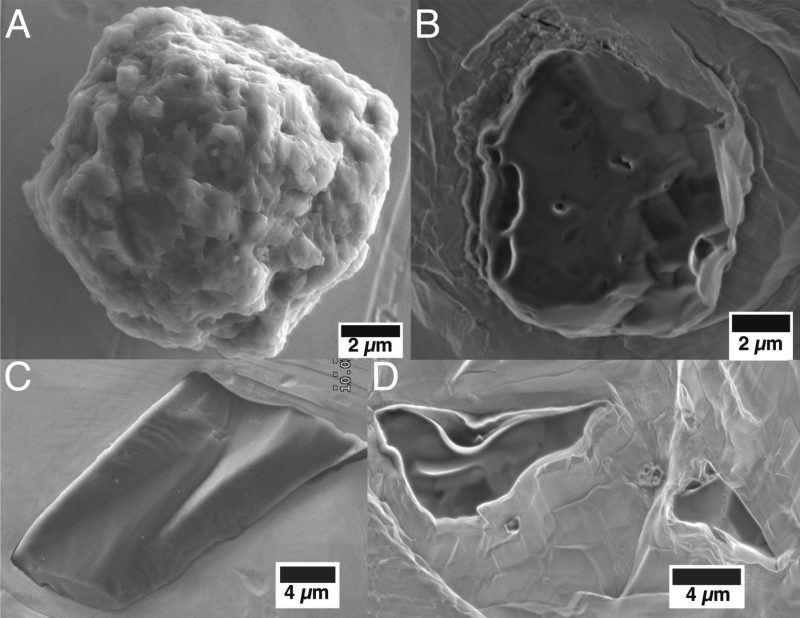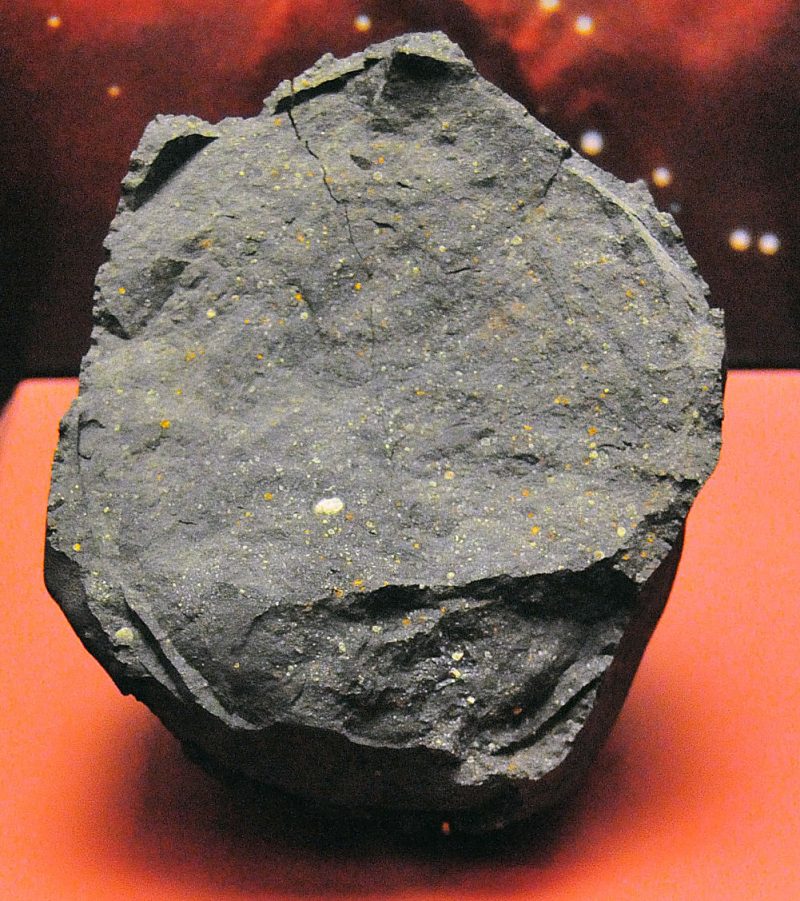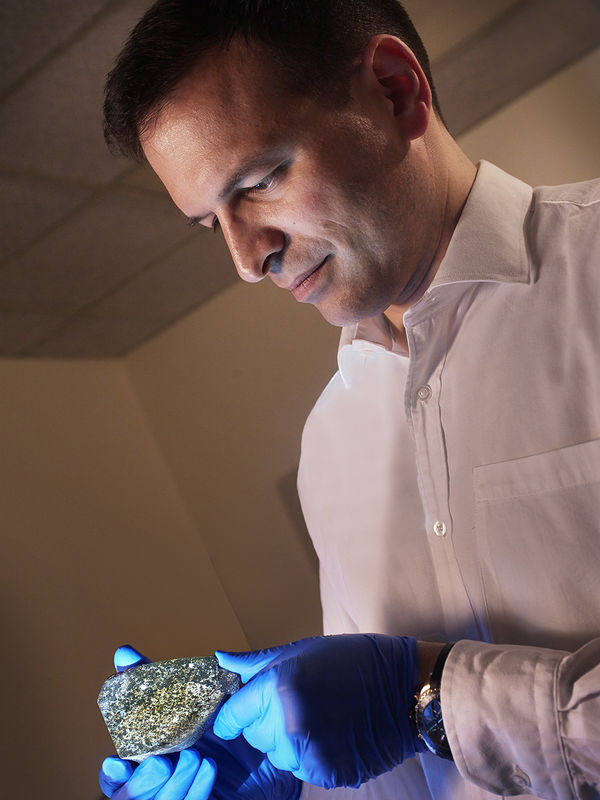
As the saying goes, we are all made of stardust. It’s true. The elements in our bodies – oxygen, carbon, nitrogen, calcium and so on – are made in the thermonuclear furnaces of stars. When scientists speak of stardust, or cosmic dust, they’re speaking of the leftover tiny particles from dead stars that exploded as supernovae. This stardust later goes into forming new stars, planets and moons, including those in our own solar system. It goes into the solar system’s debris, the asteroids and comets, and ultimately into meteorites, or rocks from space that find their way to Earth’s surface. Now scientists at the Field Museum in Chicago have found the oldest known samples of stardust in a meteorite that landed in Australia. The meteorite is estimated to be 5 to 7 billion years old. The stardust samples are the oldest material ever discovered on Earth. This dust is even older than our solar system.
The new peer-reviewed study was published in Proceedings of the National Academy of Sciences on January 13, 2020.
Philipp Heck, a curator at the museum and lead author of the paper, said in a statement:
This is one of the most exciting studies I’ve worked on. These are the oldest solid materials ever found, and they tell us about how stars formed in our galaxy.
These particles, also known as presolar grains, are indeed really, really old. They formed long before our sun ever existed. As Heck commented:
They’re solid samples of stars, real stardust.
EarthSky 2020 lunar calendars are available! Only a few left. Order now!


Though stardust is a common ingredient for new stars in our Milky Way galaxy, it’s incredibly rare on Earth. How can it be found? As in this case, the stardust was discovered in a meteorite, or space rock. To give you an idea of how rare that is, fewer than 5% of meteorites appear to contain grains of stardust. The grains within a meteorite are a true treasure and of particular interest for scientists. They’ve remained unchanged for billions of years. They can offer a glimpse of what conditions were like before our solar system came to be.
The samples being studied by researchers at the Field Museum are from the Murchison meteorite, which fell in Australia in 1969. The Field Museum has the largest chunk of this meteorite, and the grain samples were first extracted from the meteorite at the University of Chicago (UChicago) 30 years ago.
Fragments of the meteorite are smashed into a powder, which can be a rather smelly process. As Jennika Greer, a co-author of the study at UChicago, explained:
It starts with crushing fragments of the meteorite down into a powder. Once all the pieces are segregated, it’s a kind of paste, and it has a pungent characteristic – it smells like rotten peanut butter.
The pungent paste is then dissolved with acid, until only the stardust grains remain. According to Heck:
It’s like burning down the haystack to find the needle.

The researchers wanted to know how old the grains were, and what kinds of stars they originated from. Heck said:
We used exposure age data, which basically measures their exposure to cosmic rays, which are high-energy particles that fly through our galaxy and penetrate solid matter. Some of these cosmic rays interact with the matter and form new elements. And the longer they get exposed, the more those elements form.
I compare this with putting out a bucket in a rainstorm. Assuming the rainfall is constant, the amount of water that accumulates in the bucket tells you how long it was exposed. By measuring how many of these new cosmic-ray produced elements are present in a presolar grain, we can tell how long it was exposed to cosmic rays, which tells us how old it is.
So just how old are these grains? Some of them turned out to be the oldest found so far, and the oldest known material on Earth, older than Earth itself. Most of the grains are 4.6 to 4.9 billion years old, while some are as much as 5.5 billion years old or more. Earth itself is 4.5 billion years old and the sun is 4.6 billion years old. So these grains date from back to before the formation of our solar system.
In another significant finding, the researchers pointed out that there was apparently a “baby boom” of new stars forming about 7 billion years ago, and these grains may be left over from them. Heck said:
We have more young grains that we expected. Our hypothesis is that the majority of those grains, which are 4.9 to 4.6 billion years old, formed in an episode of enhanced star formation. There was a time before the start of the solar system when more stars formed than normal.

In this way, the stardust can also provide clues about stellar evolution and the history of star formation, not just stellar death. It provides evidence for enhanced periods of star formation, when more stars than usual are born, a hypothesis that has been a matter of much debate among scientists. According to Heck:
Some people think that the star formation rate of the galaxy is constant. But thanks to these grains, we now have direct evidence for a period of enhanced star formation in our galaxy 7 billion years ago with samples from meteorites. This is one of the key findings of our study.
Another interesting result from the study was that stardust particles seem to often float through space stuck together in granola-like clusters. This was unexpected, Heck said:
No one thought this was possible at that scale.
Overall, the findings provide new insight into the life cycle of stars. As Heck noted:
With this study, we have directly determined the lifetimes of stardust. We hope this will be picked up and studied so that people can use this as input for models of the whole galactic life cycle.
I wish we had more people working on it to learn more about our home galaxy, the Milky Way.
I always wanted to do astronomy with geological samples I can hold in my hand. It’s so exciting to look at the history of our galaxy. Stardust is the oldest material to reach Earth, and from it, we can learn about our parent stars, the origin of the carbon in our bodies, the origin of the oxygen we breathe. With stardust, we can trace that material back to the time before the sun.
Greer summed it up this way:
Once learning about this, how do you want to study anything else? It’s awesome. It’s the most interesting thing in the world.

Bottom line: Scientists have discovered grains of stardust in a meteorite that are the oldest known material on Earth, even older than Earth and our solar system themselves.
Source: Lifetimes of interstellar dust from cosmic ray exposure ages of presolar silicon carbide











